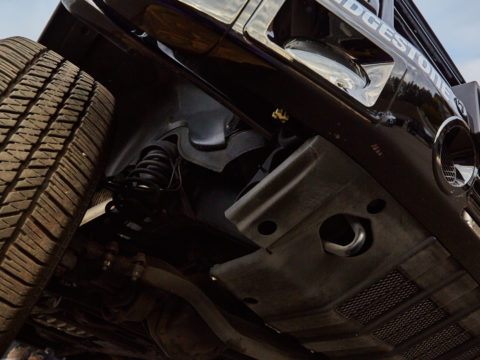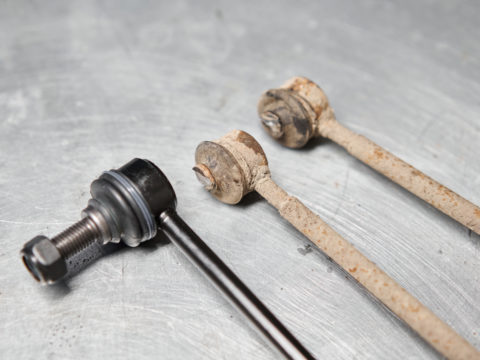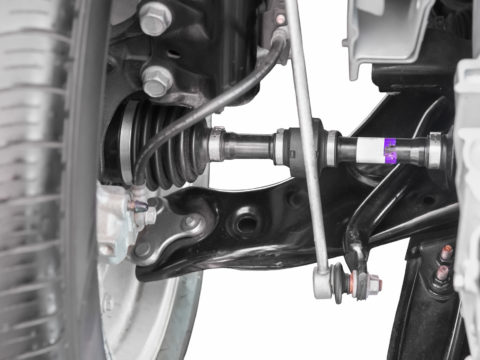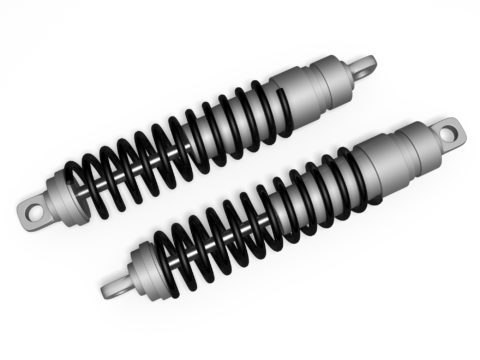When something goes wrong with your vehicle, you want to take it seriously. If the issue is in your suspension system, you must deal with it right away because such problems can make your vehicle dangerous to drive. That is one reason why you must know the bad tie rod symptoms.
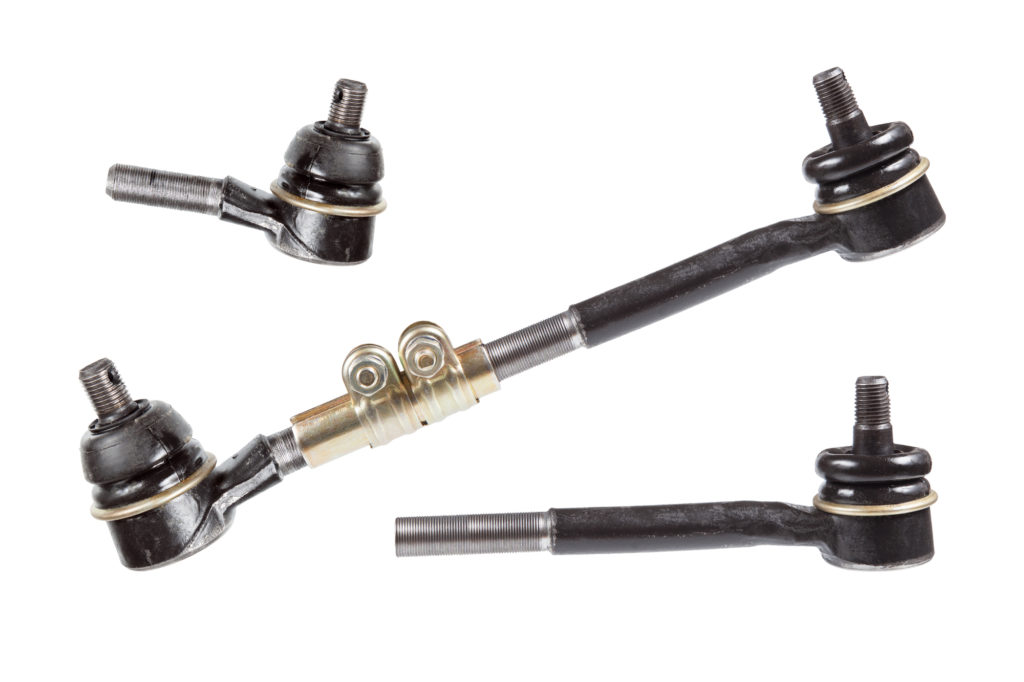
Contents
What Exactly Is a Tie Rod?
A tie rod is part of your steering assembly. It is the part that connects your steering components to the wheel and allows you to control how your wheels turn.
Cars.com explains the tie rod is at the end of the steering rack and steering knuckles, connecting these two parts together. It has two sections. The outer part is the tie rod end, and it is what will usually fail first. The inner part is the inner tie rod.
If your tie rods fail, it will impact your ability to steer your vehicle. It can mess up the alignment and cause excessive tire wear.
How a Tie Rod Works
The tie rod sits between the steering rack and arm. It ties these components together and allows them to operate. The inner tie rod attaches to the steering gear while the tie rod end attaches to the wheel. The job of the tie rod is to move about to allow your wheels to turn when you turn your steering wheel.
There is threading that connects the inner and outer parts. This makes the tie rod adjustable. When aligning the car, this is the part the mechanic will adjust.
4 Common Symptoms of a Bad Tie Rod
Because the tie rod is part of your suspension and steering, you should be able to easily notice some common bad tie rod symptoms as you operate your vehicle. These symptoms can be signs of other issues, so it is always best to check things out to ensure it is the tie rod going bad.
1. Vibrations
When your tie rod is bad, one of the earliest signs you’ll notice is vibrations in your steering wheel. It may also seem shaky or make slight movements. Often, the movement is more noticeable when you turn.
The reason this happens is the tie rod is loose and therefore, your steering wheel is not able to control it as it should.
2. Worn Tires
Check out your tires and look at where they have worn down. Bad tie rods will impact the wear on the inside of the tire.
This happens from the tie rods loosening your wheels and allowing them to fall in so that they hit the road on the inner side rather than full-on as they are supposed to.
3. Alignment issues
Your tie rods play a huge role in keeping your vehicle aligned properly. If you have pulling or notice drifting when you drive, these are signs there is something wrong. It is always a good idea to check the tie rods when you notice such symptoms.
4. Noises
Clunking or knocking in the front end near the wheels are noises that point to a tie rod issue. You’ll notice these sounds when you turn at a low speed. You may also hear rattling as the issue gets worse.
The noises come from the tie rods loosening up. They move around and make noise.
Why Do Tie Rods Go Bad?
All parts of your car’s suspension go bad over time because there is a lot of stress put on them every time you drive. These parts are not made to last an eternity. They are going to need replacement at some point.
You may have to replace tie rods more often if you drive in harsh conditions. Rough roads can lead to excessive wear and even leaking of the essential lubrication inside the tie rods.
How Stuff Works explains tie rods usually last for many miles. You may never have to replace them on your vehicle, depending on how long you go between buying new cars and what type of roads you drive on. Even though they do not go bad often, you should still get a regular inspection of them.
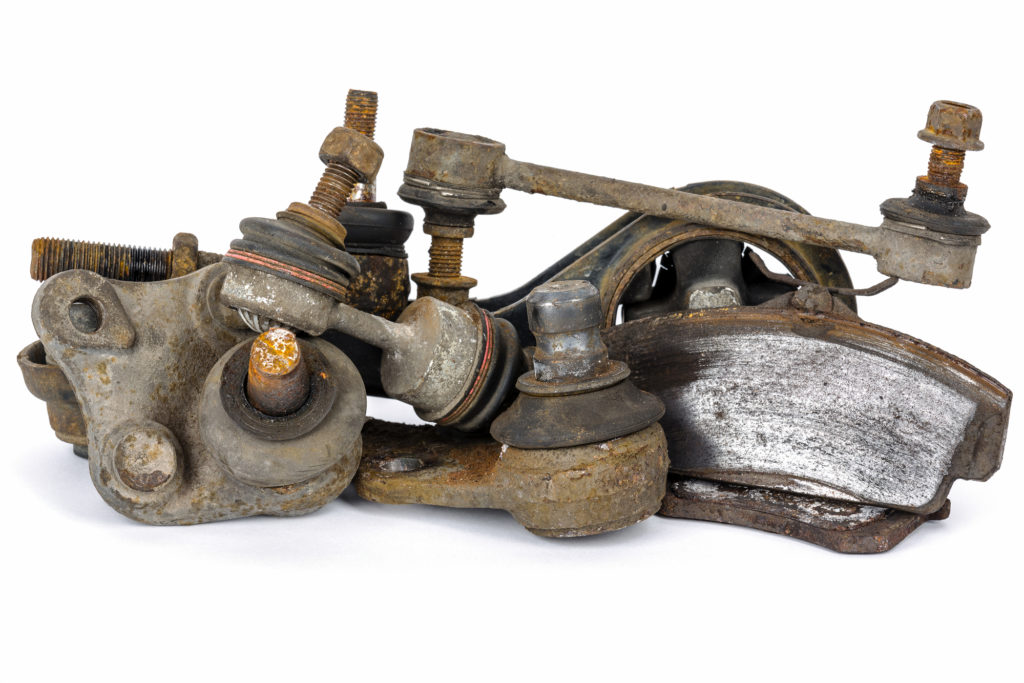
Inspecting Your Tie Rods
Inspecting the tie rods does involve some work. You need to be able to comfortably jack up your vehicle and safely secure it. If you do not have a proper setup to do this on your own, then you should take your vehicle to a professional for an inspection.
If you are going to do the inspection yourself, you want to jack up the vehicle and locate the tie rods. They are behind the tire area.
To check them, just push on them. They shouldn’t move around. If they do, it is a sign they are going bad.
You may also want to do a more complete inspection to make sure the lubricant isn’t leaking. You will need to remove the wheel and turn it to the right and then the left to get a full look at the complete assembly. Look for any leaks of fluid and listen for odd sounds
Tie Rod Replacement Costs
When replacing your tie rods, you want to replace the whole thing at one time, and you’ll usually want to replace the right and left sides at the same time, even if one side isn’t showing signs of wear. They will have a similar amount of wear over time, and doing both sides at one time will save you the hassle of doing them at different times.
To remove them, you need a special tool. For this reason, you may want to take them to a professional. It may not be worth it to buy a tool since you shouldn’t have to do a replacement often.
Removal requires jacking up the car and removing the wheels. You can then use the tie rod tool to disconnect the tie rod ends and then take off the inner tie rod. If you do not use the proper tools, you can damage the other nearby parts, which will lead to more costly repairs, so be cautious.
FAQ
Here’s a look at some common questions people have about tie rods and the various aspects of identifying and fixing problems with them.
Will My Tire Fall Off with a Bad Tie Rod?
While the tie rod connects different parts to your wheel, it does not connect the wheel to the vehicle. There is no concern that a bad tie rod will make your tire fall completely off. However, it may cause a loss of control, which is just as dangerous a situation.
How Many Tie Rods Does a Car Have? How to Tell Which Tie Rod Is Bad?
Your vehicle will have one complete tie rod for all four tires. The back tie rods will usually wear the same on both sides. The same is true for the front, so you would replace both front or both back at the same time.
You can usually tell which is bad by paying attention to how your vehicle is handling and the symptoms you see. Front tie rods will usually have more damage than back ones, so you should check them first if you have no idea which is bad.
What Happens When a Tie Rod Breaks?
If the tie rod is so bad that it breaks, the wheel detaches from the steering, and you will not be able to control the tire. As you can imagine, this is very dangerous.
How Do Ball Joints Relate to Tie Rods?
The tie rod end connects to the ball joint. The ball joint is a literal ball bearing that helps the tire move.
What Are the Symptoms of Bad Ball Joints?
Bad ball joints will produce clunking noises. You may also notice your steering is loose or stiff. Your vehicle may also drift left or right when you hit bumps.

